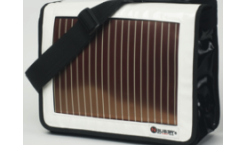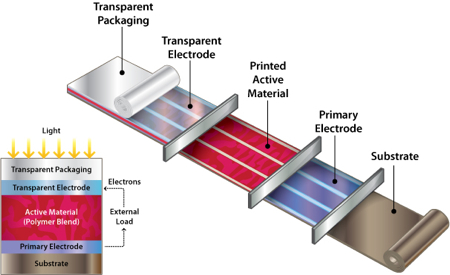
Catching some rays
By Treena Hein
General Energy Innovation Research Solar UniversityFlexible solar power material gets further efficiency boost from Canadian team.

Not many of us are able to catch some rays while at work, but for Mario Leclerc, that’s the goal. As Director of the Macromolecular Science and Engineering Research Center of Université Laval and the Quebec Centre on Functional Materials, Leclerc is continuing to build on a major contribution he’s already made in boosting the efficiency of a solar technology called Power Plastic.
Containing a polymer film capable of capturing enough light energy to charge small electronics – even a laptop – Power Plastic is among the hottest solar industry technologies on the market. Its panels are currently integrated into products such as Neuber’s ‘Energy Sun-Bags’ and the PowerBrella patio umbrella, and they’re also being evaluated as a portable means to charge batteries by the US Army. In addition, Massachusettsbased Konarka hopes Power Plastic will help boost quality of life for those in developing nations.
Photovoltaic (PV) polymers are third generation solar energy technology—the first being crystalline silicon wafers, developed more than 50 years ago. While these systems are reliable, silicon wafers are fragile, which makes processing difficult and limits applications. The manufacturing process is labour and energy intensive, and factory capital costs are high, limiting scale-up potential.

About 15 years ago, PV polymers entered the solar scene, achieving higher efficiencies and lower costs than anything that has come before. “Many people saw that these polymers could be used as solar cells,” says Leclerc. “Being similar to silicon, they were already being used in transistors and lightemitting diodes.”
Although PV polymers aren’t perfect – their shelf life is much shorter than silicon wafers – their use in Power Plastics has created a product that’s light-weight, flexible and versatile. With silicon conductors, you need pure, clean-room conditions to evaporate silicon and then cool it onto the substrate through a lot of steps, but producing PV polymers is much simpler and cheaper. “Konarka can print Power Plastic at ten feet per second,” says Leclerc.
